► The new Honda Jazz reviewed
► It’s gone hybrid-only
► It’s fun to drive. No, really…
The new Jazz (or Fit as it’s sold in the US and Japan) has been shaped by a combination of market forces, customer needs and environmental pressures – and it’s the latter which has driven the biggest revolution. Yes, the small Honda is now powered exclusively by a hybrid powertrain.
You may well remember that previous models were available similarly equipped – this is nothing like those, it’s much better, but it does mean that you can only have a Honda Jazz automatic. A self-charging hybrid system means there’s no slick manual to make the Jazz more fusion than easy-listening.
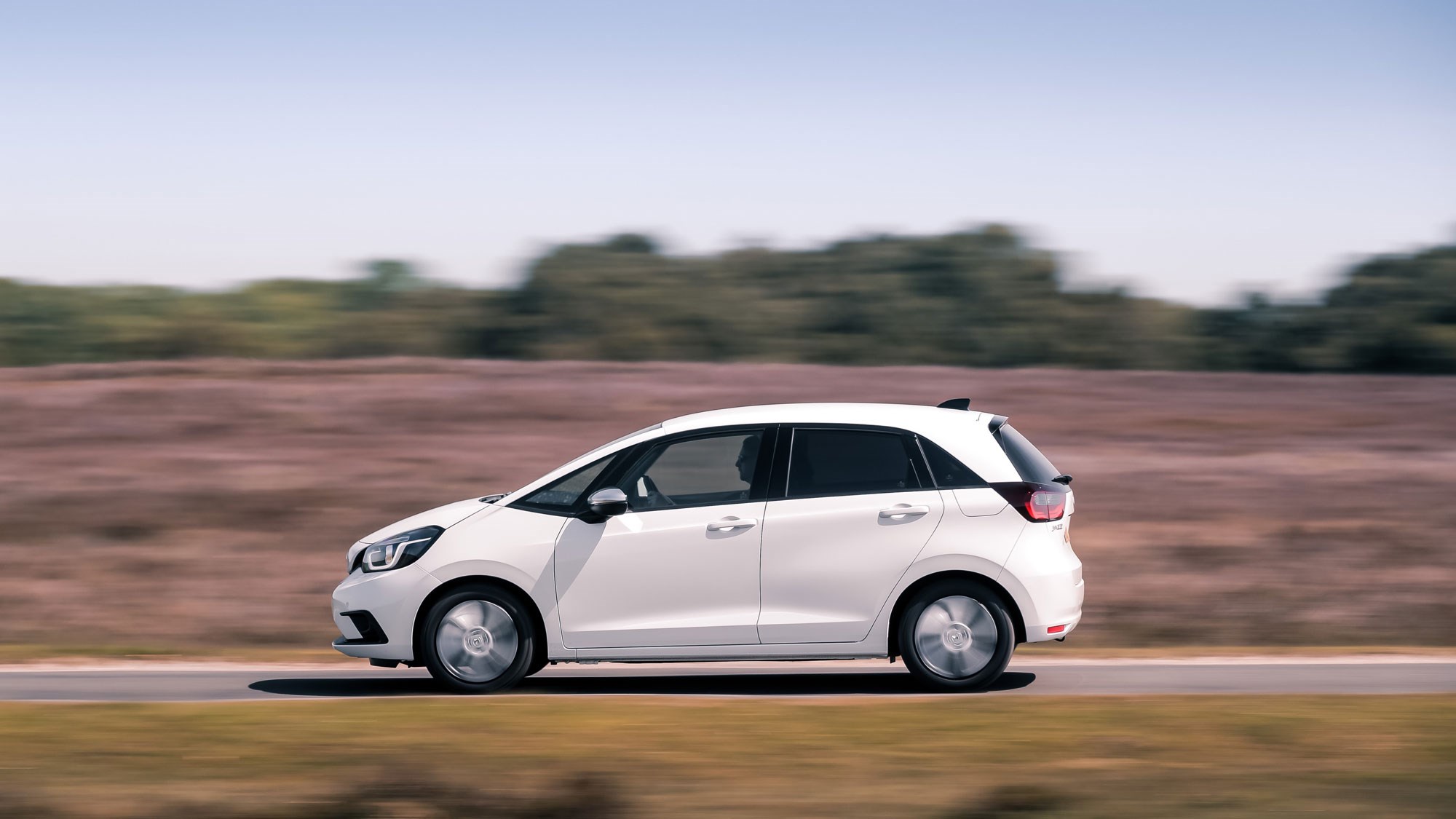
How so?
Well for a start it doesn’t use a continuously vocal transmission (CVT) like the old car. It doesn’t actually have a gearbox at all. The 1.5-litre petrol engine basically acts as a generator, providing battery charge for the powerful electric motor, which at lower speeds is the sole means of propulsion. Kind of like a BMW i3 REX.
So around town the Jazz drives just like an EV- silent, with surprisingly punchy performance off the line, without anything coming from its tailpipe. Pick up the pace or let the battery run down and the petrol engine will whir away quietly in the background to ensure a steady flow of electrons.
Then at motorway speeds or in response to big throttle inputs, a clutch between the engine and the wheels closes and allows the fossil fuel motor to provide drive. Despite using a single speed ratio, the engine revs rise as fall in response to road speed just like a conventional automatic. If you understand how this works please get in touch.
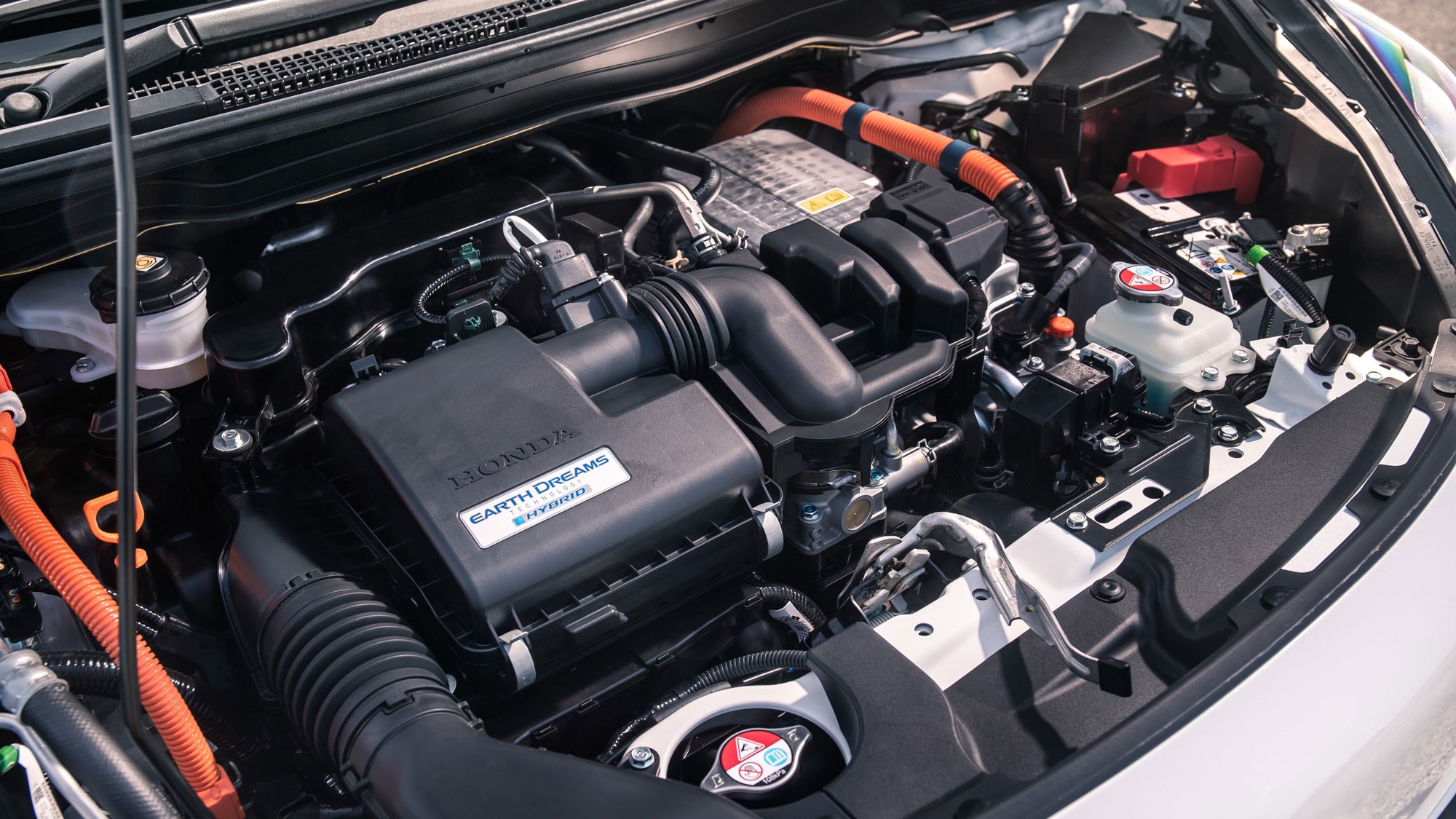
This is the first of six major Hondas to be electrified by 2022 so you can expect to see this tech in more cars soon – it’s already used in the CR-V hybrid in fact, albeit with a 2.0-litre petrol engine.
So it’s a good job it works well, then. Not fast like an NSX but suitably flexible for everyday use. It has enough power for normal driving and can deploy it at a moment’s notice without mooing louder than a milking shed. Good stuff.
Sounds clever
It’s a simple solution to the problem of getting a hybrid system to fit in a small engine bay, one Renault solved with a techgasm of multimode, clutchless dog ‘box in the Clio E-Tech. Of course, packaging is an even greater consideration in something like the Jazz which trades on interior space efficiency.
Chuck a load of batteries under the back seats and boot and suddenly that selling point disappears – remember when Honda binned off the Civic’s Magic Seats in lieu of sleeker body work? That’s not an option here.
But thanks to the drivetrain’s compact design, and some tiny next-gen semiconductor tech in the power control unit, most of the electrified gubbins can go in the engine bay instead of eating into the cargo area.
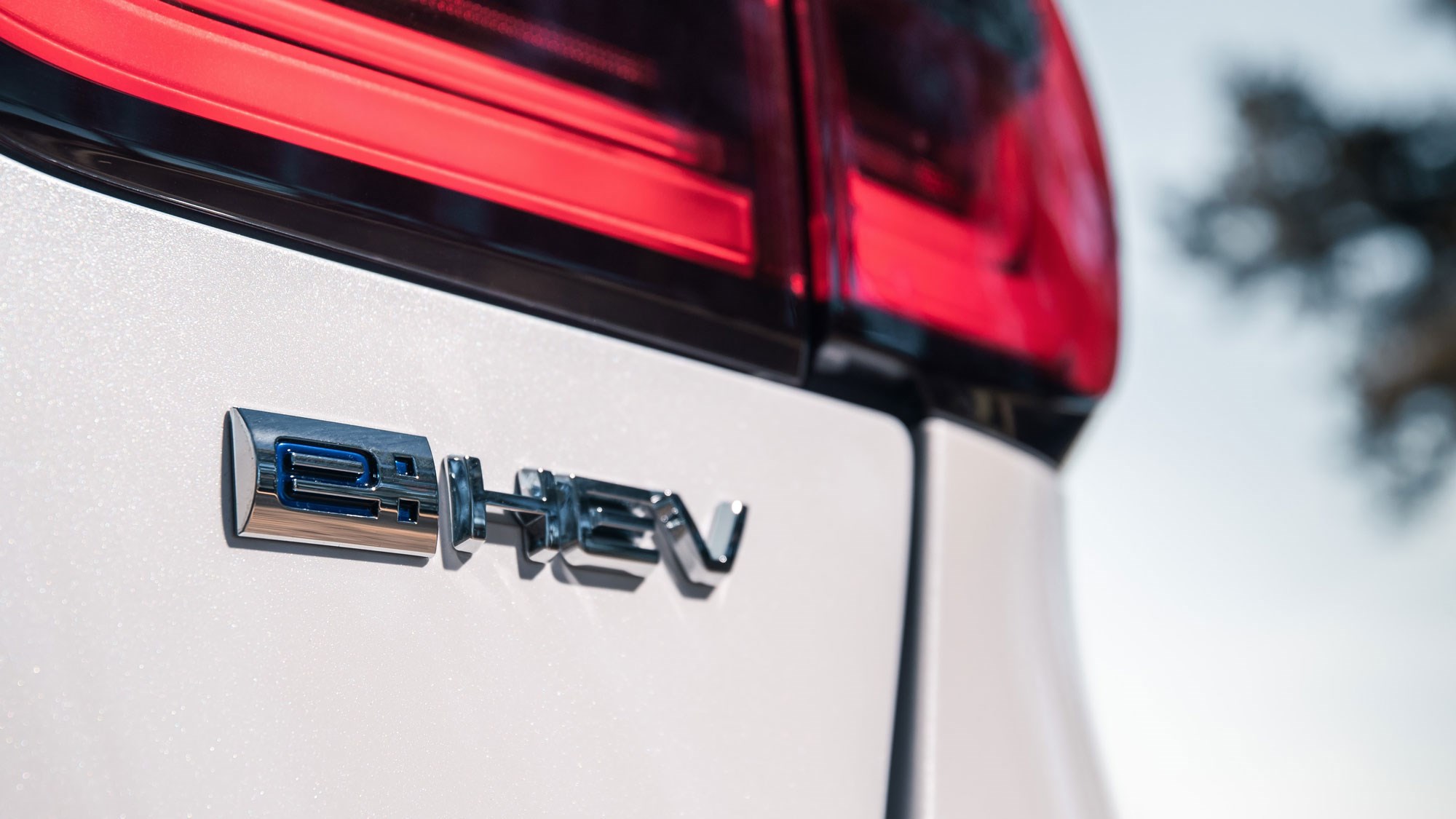
So practicality is unchanged?
Not quite – this model loses about 50 litres of bootspace compared with the outgoing Jazz, so there’s 304/1205 litres with the seats up and down. That’s trumped by the VW Group trio of Polo, Fabia and Ibiza.
Practicality in this car has always been more than just the numbers though, thanks to those party-piece folding seats. Because the fuel tank is situated under the driver and passenger, there’s nothing under the rear bench and it can be folded completely flat at the push of a button, or the bases flipped up cinema-style.
It also means that passengers have acres of legroom. Despite the Honda Jazz dimensions of 4.044m long and 1.694m wide, there’s nearly a metre devoted to rear passenger’s legs; at the launch of the previous car’s facelift Honda told us the Jazz rivalled the Mercedes-Benz S-Class in terms of rear kneespace. How we laughed! Then we sat in the back and realised they were right.
We also took them on a small test track and after several laps of scrubbing the sidewalls in the inaugural round of Formula Jazz, discovered it was quite fun to drive too.
Now you’re just being silly
And that was before the raft of chassis tweaks this car has undergone – more high strength steel in the platform, lower friction suspension components for less vibration, and a brake-based torque vectoring system.
It’s still no Ford Fiesta – it won’t lift a wheel on a roundabout (don’t ask me how I know that) but the basic recipe for fun is there. Accurate steering – variable ratio in this generation – and strong, balanced grip levels. It doesn’t even roll that much.
More impressive (and relevant) really is how easy it is to drive. The steering is super light but predictable and the driving position can be set really high up for a good view. The cabin has about as much glass as an MPV, so visibility is never an issue.
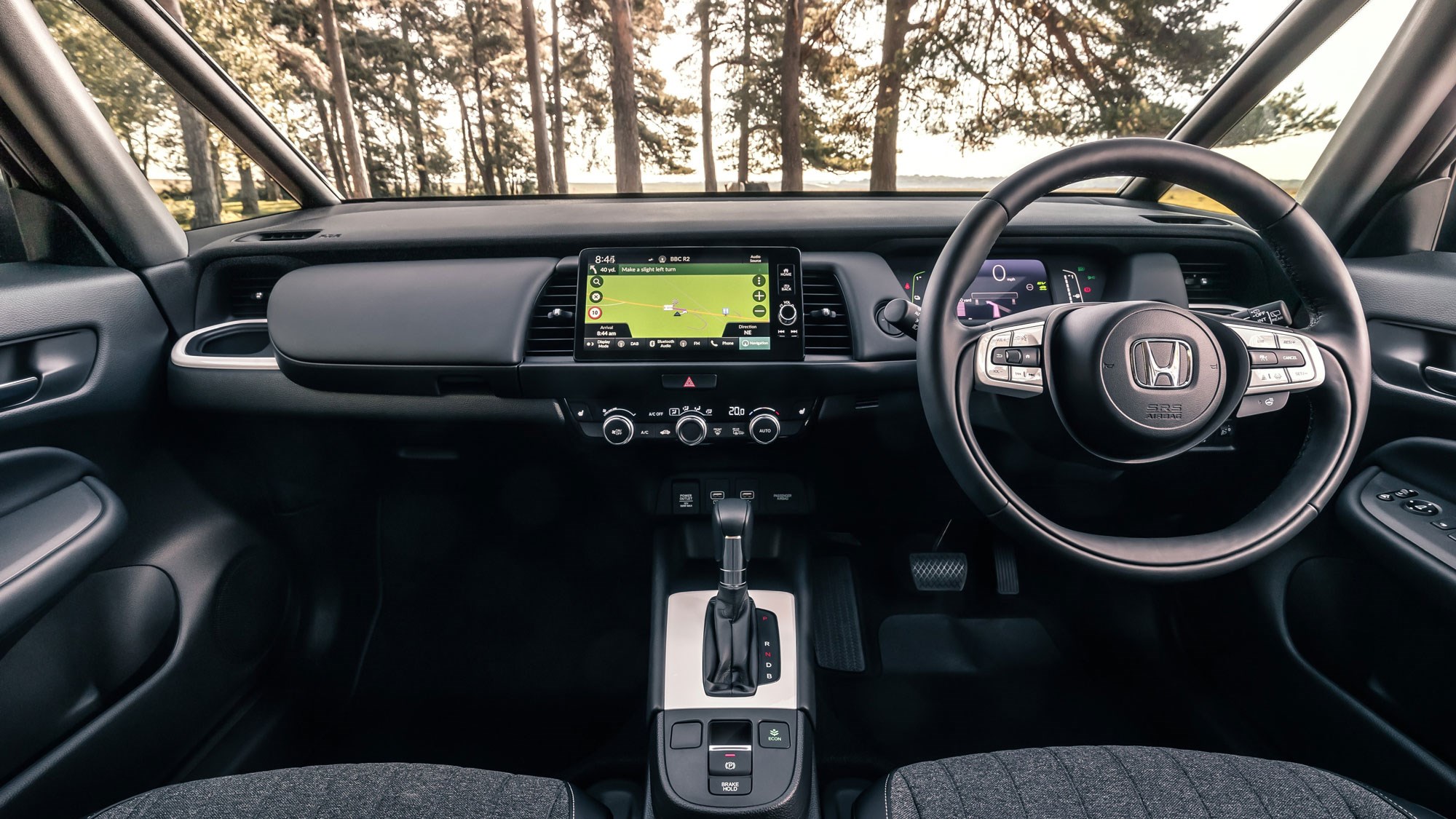
Looks a bit like a Honda e inside
Yes and that’s no accident – the thin rimmed, two-spoke wheel is identical, as is the strong horizontal shape of the dashboard. The 7.0-inch dial screen has no visor, so there’s nothing interrupting your view, but it does mean some of the gauges can be a little hard to read in direct sunlight.
The major contributor to the better view out is the shape of the a-pillars though – the front-most is now 50% thinner than before so it looks like it came out of a Peugeot 205. The rear one is still chunky, that’s because it’s now the designated crash load path.
As a result the view out has been boosted from 69 to 90 degrees, virtually eliminating blind spots at roundabouts or when waiting to turn right. Interior quality has been given an uplift too, with nicer plastic on the dash and metal garnishes on the controls. These turn and press with a defined click as well – that won’t suit all tastes but makes them easier to use on the move.
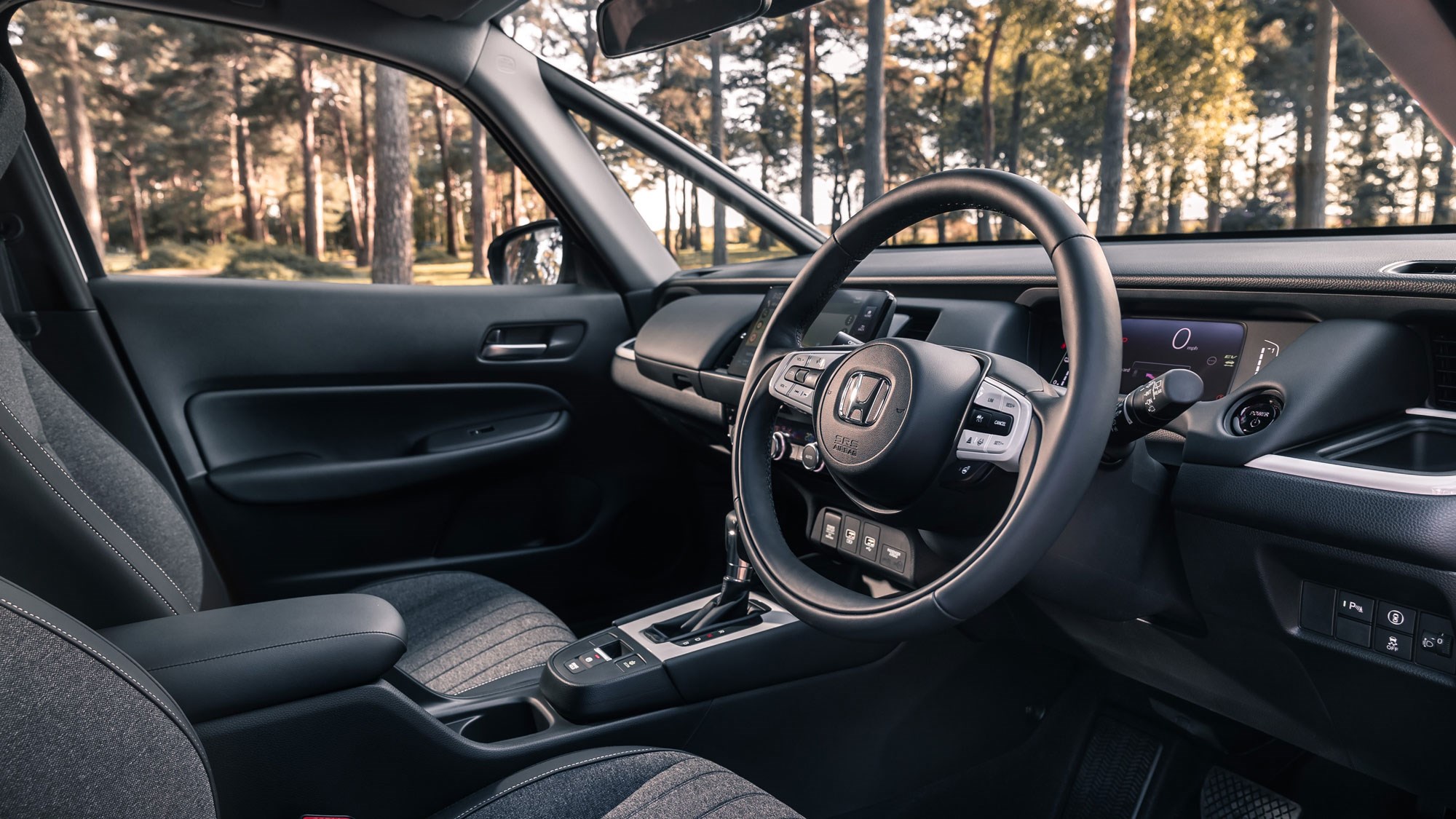
The biggest improvement in that area is the ergonomics and operation of the 9.0-inch infotainment screen – a Honda sore point for a while now – which is laid out like a phone with an info bar across the top, shortcuts along the bottom and tiles for different apps and functions in the middle. And it has a physical volume knob! Common tasks take 50% less time now, says Honda.
Connectivity gets a boost too – Android Auto and wireless Apple CarPlay are present, plus a dedicated My Honda+ app that allows you to programme the sat-nav, locate the vehicle and even lock and unlock it.
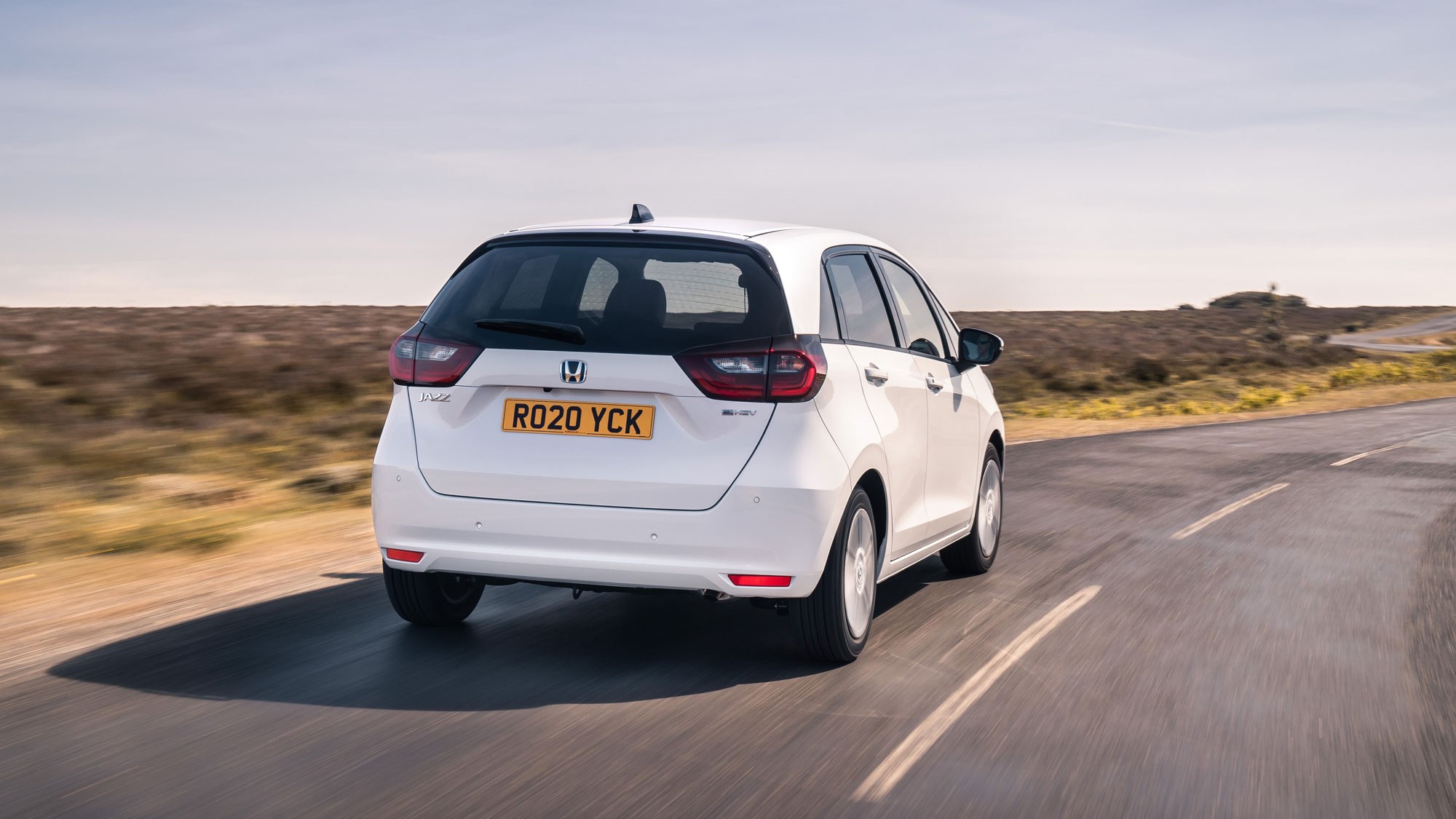
Verdict
That’s probably enough evangelising about – what should be – a fairly inconsequential runabout.
Thing is though for a while now the Jazz has been peak Honda. Full of clever solutions for its customers, whether they live in a city and need maximum interior versatility in a car that fits in a tiny parking space, or simply want an economical car that’s easy but not punitively boring to drive. It deserves your admiration if you like engineering and it’s a great hybrid option for families too.
That said, previous automatic versions of the Jazz – hybrid and otherwise – are good enough to make our list of best used hybrid cars. Still, now the two-pedal hatch has got a drivetrain as satisfying to use as its Magic Seats.